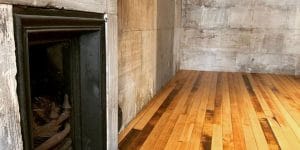I want to share with you some of the things that I look for in identifying good opportunities for CMO buildings. The ‘Commercial Multiple Occupancy’ model. As we begin to move on from the major disruption caused by the pandemic there are going to be big opportunities for those who offer flexible space on more flexible terms. Many occupants are reviewing their leases as they come up for renewal and are seeking more flexible terms. They may be downsizing or at least side-stepping to give themselves the ability to be more nimble as we progress through the coming years. They don’t want to lock themselves into another 5 or 10 year lease. This is what happened during the financial crisis. We saw a big shift over to our type of offering.
If you’re sold on the idea of creating some multi-let properties, then this list might help you get there a bit quicker. CMO properties might not be everybody’s cup of tea but these are some of the things that tick the boxes for me. The list could be really long but I have tried to keep it to a nice round ten. It’s about looking for the tell-tale signs of existing properties that are run poorly. Or partially redundant buildings that might have the potential to be refurbished to suit multiple clients.
In no particular order, here are ten items that are on my check list that might help you spot good CMO building investments.
Tenants
Let’s start with a fairly obvious one, does the building already have an existing mix of tenants? In other words, does the property actually operate as a multiple occupancy building already? It may not appear so to start with. It certainly may not seem that the building is being run particularly efficiently or in the best possible way to maximise the opportunity. The majority of multi-let buildings that we have developed already had a number of customers in them. The opportunity was in the fact that they weren’t being run particularly well.
Vacant Space
Does the property have some vacant space? It’s a good question to ask agents, property listing companies or individuals because if it has a partial income, that means by default there is vacant space. This is your opportunity to add value. Some people will look at the vacant space as a risk and a liability which to some degree of course it is. Maybe for you and I, the vacant space is the opportunity to add value. The currently occupied space is an opportunity to service some debt to buy the building and you could argue a proof of concept because somebody has already let some of the space. It’s just that maybe it’s not being configured or marketed correctly. It could of course be that the market isn’t there and you have to try and work out what the market’s asking for but ultimately having a partial income benefits you in many ways. Not least because it gives you an opportunity to leverage that income to buy the property in the first place while still giving you an opportunity with that vacant section.
Who manages the building?
Is the property you’re looking at being promoted by a commercial agent? Maybe they are managing the building and trying to sell the space rather than an individual on site or indeed the owner. I have frequently found that multi-let buildings managed by commercial agents aren’t as efficient as they can be or could be and there’s very often an opportunity there for you to improve occupancy and the value of the offer. When I find the building that is managed by a commercial agent, that’s a big tick because I know that in the past I have found opportunity there.
Compare & Evaluate
If you manage to get a copy of the profit and loss or the cash flow for a property which is perhaps already multi-let, that’s going to give you the opportunity to compare and evaluate whether the current market rate for that property is actually correct. For instance, if the property is fully occupied, that doesn’t mean there is an opportunity. We have bought some buildings with high occupancy but actually they were at the wrong price point. The market changed the offer and the property was valued more. Or perhaps they’d never quite got into gear and caught up with the market price. Myself and students I have worked with have found great value in looking at profit and loss and balance sheets. When you look at the competition and you work out where the market should be, the hidden opportunity can reveal itself. Interestingly, that might even mean that you don’t really need to do any physical development of the property. You may just need to change the offer or the price point and I have seen that done a few times to great effect.
One of the serendipities of writing these blogs and recording podcasts is that it actually forces me to think about what we do and to try and articulate that as well as I can in simple terms. It is also made me consciously show my working hypothesis on how to analyse a market. It has led me to develop the Commercial Property Market Analyser. Effectively it’s a picture or a map, if you will, of how the market can be divided up and is about identifying which part of the market is being serviced well and where there are gaps. For instance, taking the example of industrial space, it might be that in your target area there are lots of industrial space but it’s all 50,000 square foot sheds or larger. Some of it is unoccupied but actually there is a really strong market for units of up to 3000 square feet. An agent might tell you “there are lots of vacant industrial space in your target area, so don’t invest there”. But actually, it’s not about the product or the sector itself. It’s about the size of the spaces that are available. Simple really when you think about it. It does, of course, go without saying you need to carry out some good competitor analysis so you can get to grips with what’s happening in your target area.
Subdivision
Another little tick in the box for me is finding buildings that are already subdivided or could be readily subdivided into reasonably sized spaces. Ideally those spaces would not be identical to each other. You need some kind of variation of space so that you can satisfy demands from different types of occupants. The thing about subdivided properties is that often landlords seeking single occupants find it difficult to find those who actually want multiple subdivided space. So those properties can often be viewed as problem properties but actually, for us, they can be ideal.
Veiled Buildings
Another thing I look for are buildings that are hard to search for. What I mean by that is, buildings that are not marketed very well, if at all. They have limited or no internet presence, a sign that fell down three years ago and no real-world presence either. By default, that does of course mean they’re going to be hard for us to find. You may not find them by internet search and you may have to get off your backside, get out and drive the streets, industrial parks and look for properties that are difficult to find. I know that sounds a bit odd but poorly marketed buildings can be very good opportunities.
Scale
Something else that I look for is the opportunity for a certain amount scale. As our business has grown, so has our investment criteria. One of those criteria is finding buildings that are of a reasonable size. A small building will use a disproportionate amount of cost to run it compared with the larger building with costs shared out over a larger space. That doesn’t mean your first property has to be a large one. There’s still something to be said for starting small and learning as you go.
Windows
One I have often mentioned is that I look for windows. Customers like natural light, so it has become a fixture on my tick sheet. Of course it does depend on what sector you’re going for and if that sector is more industrial or maybe retail. The windows don’t necessarily need to be for natural light either. They may be for display purposes or just for front office but if you’re looking for different types of space to let out office or appointment only, then these really need windows.
Access Points
Is this building served with one entrance and one entrance only? In of itself that is not a deal breaker but I have found a certain number of access points gives you more flexibility during development so you can phase works and change your model if you need to allow individual customers access into individual units.
Service Locations
Does the property have good communal service locations which are located sensibly for area optimisation? Or are they moveable to central areas? Having a service core with toilets and tea points etc. on the perimeter of a building can lead to less efficiency of that building because you’ll have to have corridors leading to those services for everybody. The more centralised, the greater the ability to make your space more efficient.
Whilst individually these points are all reasonably important, know that you’re not going to find a building with all these things. But finding as many of them as you can leads to a higher probability that this building has good potential. There is no point struggling with a building that doesn’t quite work when you could wait and find one that really does. There are other factors which are more personal to my unique investing criteria such as location. Possibly listed status, a specific minimum size and other factors that I’ve shared before. But these points should be pertinent to most of us. There are loads of other things to look out for of course, but these points help in those early stages of just trying to identify potential targets. Now, the research has to begin properly and that might include some more desktop work by using some of the paid services online for finding out details about ownership, title, classification etc. This is where you start putting in time and perhaps some money but at least by going through this list, you can identify whether this project is actually worth looking at.
I hope this helps to give you enough context to go and find that building. It’s not the easiest thing to do. If it was, there would be very few opportunities left. Remember one of the advantages of the commercial property market is that it can seem as clear as mud. There are lots of chances to find good buildings hidden in plain sight.
For further information, join our Facebook group to meet others on their commercial property investment journey.
If you are in a hurry then get in touch to see how we can help.





